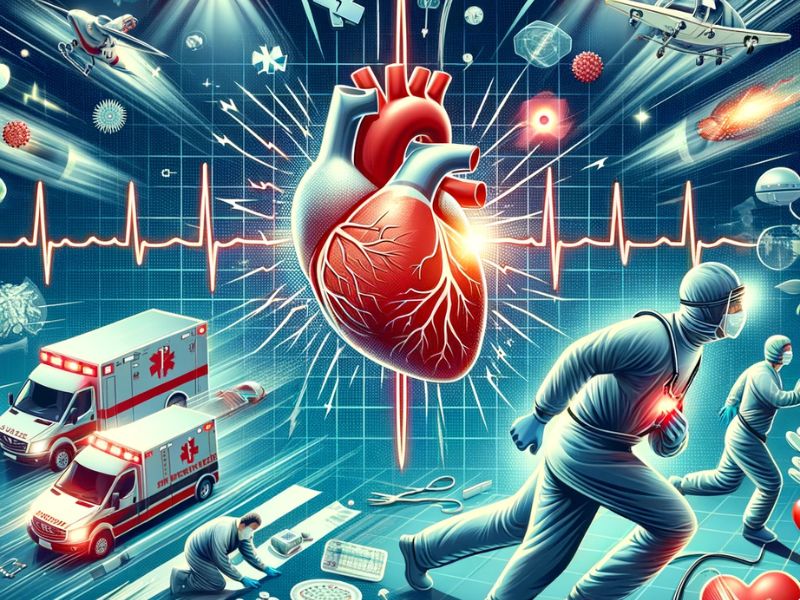
The Evolution of Acute Myocardial Infarction Treatment: New Frontiers
Analyzing Innovations in Heart Attack Care and Their Impact on Emergency Personnel
Acute myocardial infarction (AMI), commonly known as a heart attack, remains a leading cause of global mortality. In recent years, significant advancements have been made in its treatment, revolutionizing the approach of emergency personnel. This article explores recent innovations in AMI treatment and their impact on emergency response practices.
Recent Developments in Heart Attack Treatment
The treatment techniques for AMI have undergone radical changes, with the adoption of new drugs and interventional procedures. For instance, the use of thrombolytic therapies, which help dissolve blood clots in the heart, has shown notable improvements in survival rates. Additionally, interventional cardiology, including procedures like angioplasty and stent implantation, has become standard in many emergency centers. These developments have not only improved patient outcomes but also necessitated updated training for emergency personnel.
Impact on Emergency Practice
The evolution of AMI treatment has significantly influenced emergency personnel practice. With new therapies and technologies available, it’s crucial for responders to be adequately trained to identify signs of a heart attack and initiate appropriate treatment as quickly as possible. This includes the ability to perform ECGs on-site and the use of updated protocols for administering life-saving medications. Effective early patient management can make a difference between life and death.
Challenges and Future Perspectives
Despite progress, challenges persist. For example, timely access to interventional cardiology centers is limited in some areas, making rapid stabilization and transportation of patients crucial. Moreover, ongoing research continues to develop, promising new therapies and technologies that could further improve outcomes for AMI patients. Emergency personnel must stay updated on these developments to provide the best possible care.
Crucial Role of Prevention and Awareness
A key aspect in managing AMI is prevention. Raising public awareness about heart attack risk factors, such as smoking, obesity, and hypertension, is essential. Awareness programs and health campaigns can play a pivotal role in reducing heart attack incidences by educating the population on healthy lifestyles and the importance of regular medical check-ups.
Technology and Innovation in Heart Attack Treatment
The advent of new technologies has led to significant innovations in AMI treatment. For instance, wearable devices for cardiac monitoring offer the possibility to detect abnormalities before severe symptoms manifest, allowing for more timely and potentially life-saving interventions. Additionally, artificial intelligence and data analysis are beginning to play a role in improving heart attack diagnosis and treatment, providing advanced tools for patient data analysis.
The evolution of AMI treatment is a rapidly expanding field, requiring ongoing commitment to emergency personnel training and research. The advancements made so far have significantly improved survival rates and the quality of life for heart attack patients, and the adoption of new technologies promises further improvements in the future. Keeping emergency personnel updated on these innovations is vital to ensure that patients receive the best possible care.


